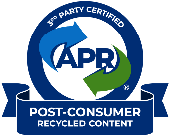P&G proxy vote this week: Huge stakes for Cincinnati
Thousands of P&G jobs are at risk as shareholders consider adding Nelson Peltz to the board, potentially reshaping the company's future.
Oct. 9th, 2017 - Alexander Coolidge - Cincinnati.com
Thousands of Procter & Gamble jobs are facing potential elimination as company shareholders decide Tuesday whether to add hedge fund boss Nelson Peltz to the board of the directors.
Hedge fund boss Nelson Peltz envisions a Procter & Gamble where only 1,000 employees work at corporate functions with an unspecified number of workers reassigned to fewer business units, which he also wants to consolidate.
P&G employs 10,000 workers in Greater Cincinnati, so it's not hard to understand why the proxy battle threatens to eclipse even a close ongoing mayoral race as the region's most hotly-contested election.
Local P&G workers are only 1 percent of the region's jobs, but many are arguably the 1 percent of the workforce. Locally-based Kroger employs twice as many workers, but most of P&G's area employees are managers making six-figure salaries that power the region's economy, vitality, arts and charities.
Even Mayor John Cranley, who is fighting for his political life, has urged shareholders to reject Nelson Peltz, head of Trian Fund Management, who wants greater say over the consumer product giant's strategy and oversight of the executive team.
"This (proxy campaign) involves a potentially monumental change to one of the cornerstone businesses in our community," Cranley wrote. "The investor, who has no ties to P&G or to Cincinnati, could undermine much of the success that P&G has achieved and shared with our region."
The Cincinnati USA Regional Chamber, the Cincinnati Center City Development Corp. (3CDC), REDI Cincinnati as well as a number of the region's most noteworthy CEOs have also all sided with P&G and urged shareholders to vote against Peltz.
P&G is being targeted by Peltz after years of lackluster growth and ongoing restructuring. He has advocated cutting units and management layers to reinvest back into advertising and potential acquisitions.
Peltz has gained momentum among investors, picking up endorsements from influential proxy rating firms, Glass Lewis, Institutional Shareholder Services and Egan-Jones Rating. It also recently was endorsed by The California State Teachers' Retirement System.P&G says after completing the sale last fall of more than 100 non-core brands, the company is leaner and gaining momentum. The company is already undergoing a second five-year $10 billion cost-cutting push that will boost productivity further. P&G says Peltz's ideas aren't new and would be a distraction as the company seeks to complete its restrucuturing.No matter which side prevails, P&G will be under increased pressure to deliver stronger results.
Change is in the air.
P&G's long-game perspective challenged by quarterly demands
Win or lose, P&G needs to swiftly boost results and the share price.
If Peltz wins, that will be his top priority. If P&G wins – there's still another shareholder vote in a year and the company will want solid progress to ward off another potential proxy challenge.
Former CEO John Pepper marvels at the growing influence of quarterly results and the desire for a quick buck. He worries that P&G could lose some of its long-game strategic perspective that has made it stand apart for decades. That perspective and the company's investment in its workers have made P&G a coveted employer.
In his Downtown office in Columbia Plaza, Pepper keeps pictures on his wall of two former P&G CEOs. One is William Cooper Procter, who introduced profit-sharing for all company employees in the 1890s that cultivated worker loyalty in the depths of the Gilded Age. The other is John Smale.
Pepper recalls how in the mid-1980s Smale bravely reinvigorated core brands with the back-to-back unveiling of innovative products: Tide liquid; Crest with tartar control; and shaped Pampers diapers. The monster marketing costs of so many new products sank 1986's profits – the first time annual earnings didn't increase in several years. But the extra investment quickly reaped market share gains for years to come.
"It was the right thing to do – that's how John operated," Pepper recalled. "He went to the (Wall) Street and they understood."
Research & Development works on the next big thing, awaiting what's next
Meanwhile, work continues in Mason as P&G researchers grouse over Peltz's desire to move their positions into business units. They also resent Peltz characterizing their R&D work as "a hobby," according to P&G CEO David Taylor, speaking this summer to The Enquirer editorial board.
One such researcher is John Layman, a section head in P&G's materials science department in corporate research. Earlier this year, P&G disclosed his research led to the development of new technology that will remove dyes and contaminants from some recycled plastics.
It's a big deal because once approved by regulators it would allow P&G and other companies to produce shampoo, detergents and other products in completely recycled containers – saving millions in costs and reducing waste to landfills. Currently, P&G products come in containers with recycled plastic sandwiched in between layers of new plastic.
"We developed this technology in our own laboratory," said Layman, who's section works for multiple P&G brands.
P&G plans to make money on the technology by licensing it to Innventure, a Chicago-based innovation company. Layman is also a founding invetor at PureCycle Technologies, the start-up company founded by Innventure around P&G’s technology
Kathy Fish, P&G's chief technology officer, who oversees the company's $1.9 billion budget for R&D, said keeping research at the corporate level allows innovators to look beyond the immediate needs of specific business units.
"We have the ability to step back and ask 'Where is the consumer going?'" Fish said, adding that P&G's biggest breakthroughs have come "at the seams" of different business units.
She noted Tide Pods were made possible because the company was in the diaper business and had superior plastic-film webbing technology.





-1.png)
.png)
